Matteo Jorgenson and the blessings of a lifetime of near-misses
In a GCN exclusive, we dove deep into the untold background of Jumbo-Visma's new American recruit and what made him the rider he is today
Logan Jones-Wilkins
Junior Writer - North America
© Velo Collection (TDW) / Getty Images
Matteo Jorgenson came close to winning stage 9 of the Tour de France
Matteo Jorgenson has never been a prolific winner. And that has made him one of the best cyclists in the world.
Whether it is in the biggest Classics, the most important one-week races, or the Tour de France, Jorgenson has elevated into the upper echelon of the WorldTour. What is holding him back from being seen as one of the best is his lack of consistent wins. Yet for Jorgenson, the thought of that elusive top step of the podium has pushed him his whole career.
His career and development have been as a 'nearly' man. Every step along the way, Jorgenson has shown to be one of the strongest riders in his cohort, yet he seems to overlap with a rider or two with more raw talent or a quicker development. And it has always made him hungrier.
With Matteo Jorgenson moving to Jumbo-Visma for 2024, he is making another step up in the world of cycling. With his neo-pro year further in the rear-view mirror, the next years will be crucial in how Jorgenson orientates the rest of his career. Nevertheless, while the 24-year-old will no doubt look forward to his future, to understand the rider he is today – and to parse through what might come next – GCN took a deep dive into his past as a rider to understand him more.
Read more: Jorgenson denied long-range victory as Woods wins atop Puy de Dôme
Familial lessons
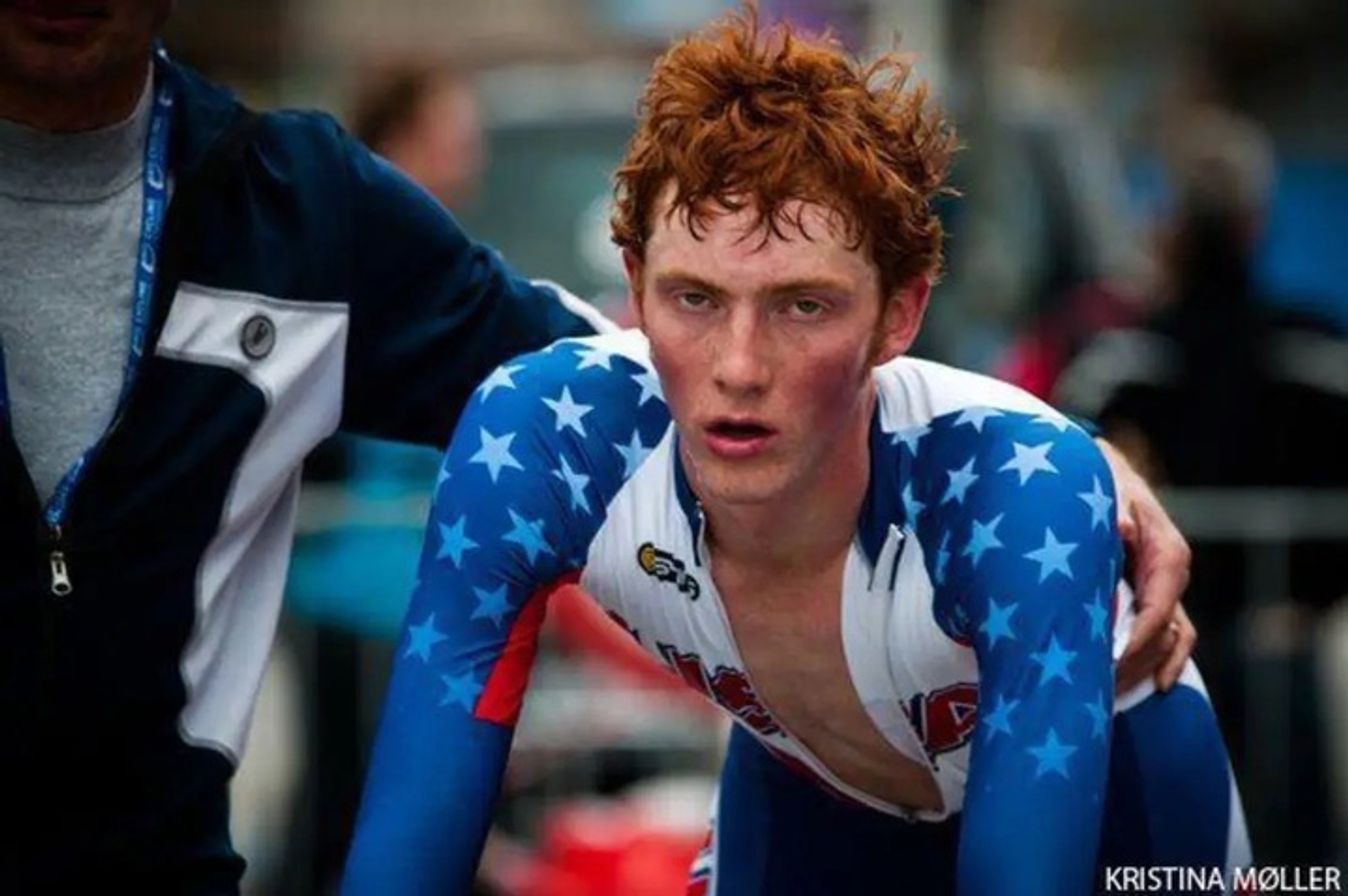
Photo courtesy of Kristo Jorgenson, by Kristina Møller
Kristo Jorgenson was the first of the Jorgensons to ride and made it all the way to a top 10 at the junior worlds time trial
For the cycling world at large, Matteo Jorgenson has been seen as this rider who has come from an unexpected pathway to WorldTour success, somewhat out of nowhere. And while the United States is far from cycling's heartland, his story has some less surprising elements. In many ways, he has been on the radar for a while and has been aided in his development by one of the strongest resources a rider could have: an older brother who almost made it. But interestingly enough, Kristo might be the person who has been the most surprised by Matteo’s career.
Kristo Jorgenson, six years older than Matteo, was a cyclist in his own right, who won a US junior time trial championship and came top ten in the junior world championship that same year. Nevertheless, Kristo never made the cycling leap his younger brother did, despite his junior results suggesting more potential for success in the pro ranks.
So, how surprised is Kristo to see where his brother is now?
“I think because we're related and grew up with quite similar attributes I have an interesting perspective,” Kristo told GCN in a recent interview. “I think I always had doubts about his ability to make it to the WorldTour. When I was coming up, I never believed that I would be able to race in the WorldTour so I kind of transferred that onto him when he was growing up. I was like, ‘okay, it's a great dream, but who knows if that's really possible.’ I think, in the back of my mind, I was always thinking if he really could do it.”
Interestingly enough, at the same time, the younger Jorgenson was seeing the seeds of his own cycling career beginning to grow.
“His experience had a lot to do with my choice,” Matteo told GCN in an exclusive interview. “I was able to view him from the outside at a young age and see the results he was getting. From a young age when you can see it from the outside, it motivated me a lot so there is probably something physiological there.”
The relationship between Matteo and Kristo raises a couple of interesting points. The first of which is how US cycling has seemed to shift its ability to develop talent and what potential America’s young cyclists can see in themselves. Matteo is of an age around a number of talented WorldTour American riders. Kristo, however, is of an age where there was almost a drought of American talent at the sport's highest level. He graduated the junior ranks in 2011 in the midst of the great recoil in American competitive cycling, with the fallout of the USADA investigation into the U.S. Postal Service Team and Lance Armstrong.
“For me, it was a very narrow path to the WorldTour for American cyclists," Kristo said. "It's not a very well-built pipeline and any step off that path can take you off to do something different. Most of those diversions are easier than the choice he made. You have to stay committed to that end goal to keep going. It's not straightforward.
“When I stopped riding I didn't know how you went from even the place I was to the Tour. I had raced the World Championships and for the national team, yet I still felt like there was no idea how to make it a career. There were so many leaps of faith you have to take.”
It is for these reasons that Kristo saw Matteo’s journey through jaded eyes. The route to Europe, as he saw it, was an unfinished pipeline. And frankly, Kristo seemed to have made a prudent choice. Instead of pursuing cycling, Kristo went to Columbia University, an Ivy League institution, and now works in Amsterdam as a software engineer. Interestingly, Matteo sees his brother's example quite differently. For him, where Kristo saw his path forward as an unpredictable and unattainable option, Matteo saw it as the path of least resistance.
“The biggest difference between us was, for Kristo, he saw stopping riding and going to school as the easier option - going to an Ivy League school was just easier than continuing cycling," Matteo said. "For whatever reason, I saw the work of being a cyclist as a way easier task than going to school. I didn't love school that much and I didn't really have the ambition to go to a really good university and go down that path.
"So there was a big difference, for some reason, between what we viewed as what we wanted to do for work. I think training and that kinda thing was way easier for me than for him and school was a lot easier for him than it was for me.”
Yet, ascending to the WorldTour is never ever easy. It is a class that in many ways is more selective than the Ivy League. For riders entering the WorldTour, and then ascending even higher into the small circle of serial winners, there has to be a special drive to make the sacrifices necessary.
The difference between Kristo and Matteo – junior riders that were, as Kristo said, “from the same stock” – or even other promising juniors who make it versus those who don't, is almost wholly in their ability and desire to sacrifice. While part of this certainly is in the two brothers' separate perception of higher education and the satisfaction in pursuing a professional road career, ability and sacrifice came into it too. A big factor for Matteo was the decision to move to France to pursue his racing career.
“When Matteo decided to move to France I remember that being a difficult discussion with my parents, particularly my mom, to try to convince them that it was a good idea, that it was okay and you don't need to go to college immediately," Kristo said. "At that point, I wasn't even thinking of that becoming a career for him, I was thinking about it as just an opportunity to take a couple of years, grow up a little more and experience the world.
“They kind of went along with that because in their mind it was an educational opportunity to move to France and learn French. To them that was almost like the highest form of education. They saw that as a big opportunity for him to progress as an individual. It also happened to help him progress in his career.”
And progress he did, but not without two years as a junior that were characterised by scores of near-misses that mirror Matteo’s results in the professional ranks.
Growing pains
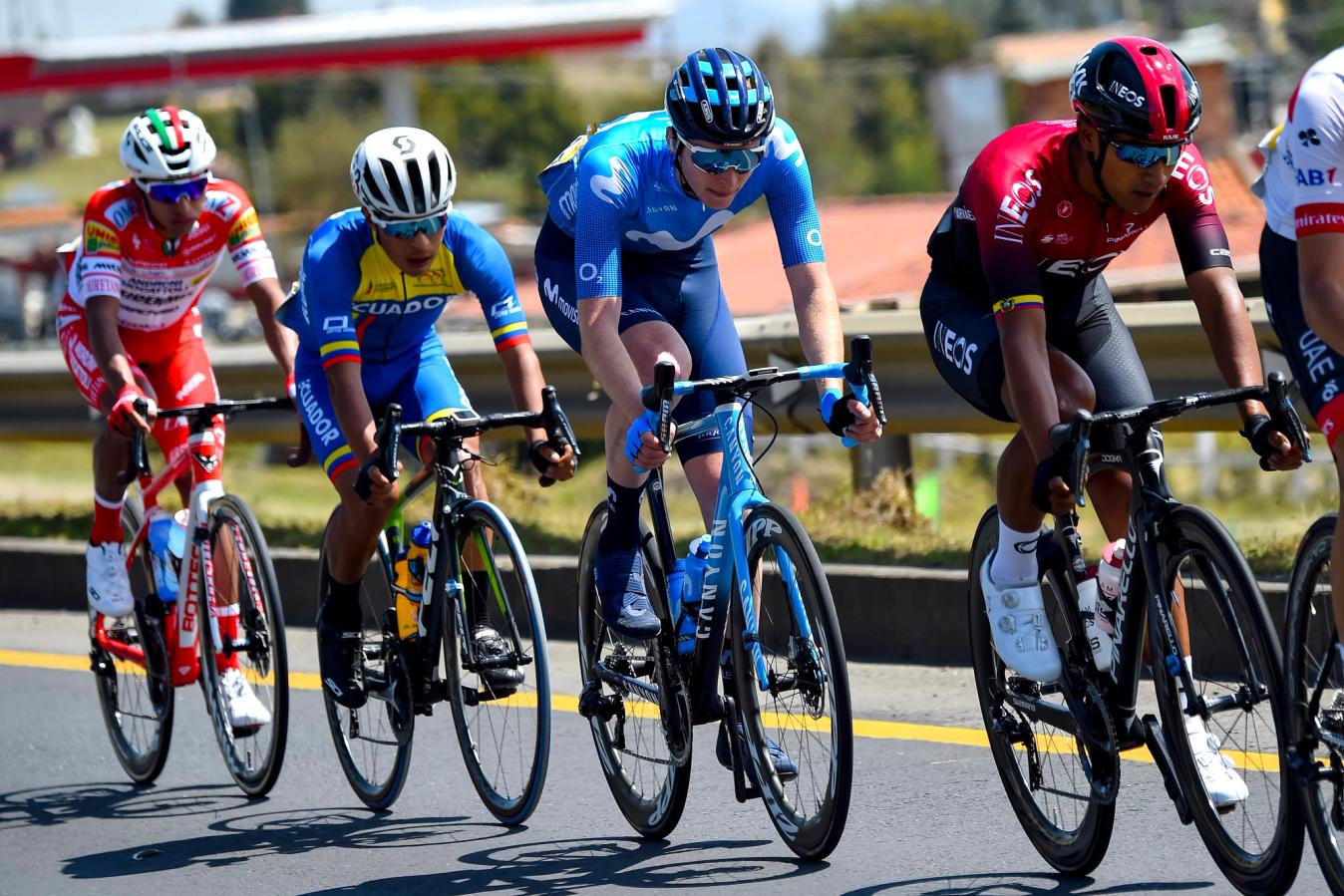
© Sprint Cycling Agency
Jorgenson at his first race for Movistar – the Tour of Colombia, pre pandemic, in 2020
Simon Jones remembers the first time he met Matteo Jorgenson. It was a decade ago as the two were squaring off at the 13-14 nationals in the sweltering heat of an Augusta, Georgia military base. At the time, they both had one common enemy: a kid by the name of Sean McElroy who was much, much bigger than the rest of the juniors. In the road race, when McElroy attacked, only Jorgenson tried to follow. Predictably, the much smaller Jorgenson was doomed with the deck of puberty stacked against him and was dropped from McElroy’s wheel.
Yet, as Jones noted, everyone else in the junior peloton took note that he even tried.
“The next year we were in a breakaway with guys like Christopher Blevins and Brandon McNulty as a 15-year-old in the 15-16 category,” Jones remembered. “On the final ten-minute climb I remember I got dropped and he was looking great as the youngest guy left up front. In the end, he finished second to Blevins which I think made it pretty clear to everyone that he was one of the fastest guys at that point. That is still the age where one year matters and he was attacking guys who were much bigger.”
As Jones and Jorgenson went up in age groups to the U19 category, the two talented young riders became teammates with the Hot Tubes Development Team.
Jorgenson was good, but as a first-year things were stacked. Then, it continued the next year where you had really, really talented guys coming up. So, he got second, third, and fourth, a lot.

© Velo Collection (TDW) / Getty Images
One of Jorgenson's biggest rivals as a junior was Brandon McNulty. Yet the scales tilted in McNulty's favour most of the time. He was, after all, junior world champion in the time trial
“I can point to almost every race his last junior year where he would win the time trial of these junior stage races, like the Tour of Ireland, and he would lose the jersey in the road race,” Jones remembered. “It became a running joke that year where we would play ‘Hurt’ by Johnny Cash and throw the jersey in the trash can when it would happen. It led to this character he built of having a sort of negative outlook on how the race would go, but it made him race harder and train better for the following race.
“Matteo is the hardest working cyclist I have known, and I have known a lot of them. He just does those little things that are above and beyond. A portion of that, and maybe it's because of constantly getting a second place as a junior to these guys who were also very very good, made him say in his head ‘I am just as good as all of these guys, why do I never win?’”
One of those rivals was Sean Quinn. Quinn was a member of the now-defunct Lux cycling team which developed riders predominantly from the Southwest of the United States like McNulty, Kevin Vermaerke (dsm-firmenich), Riley Sheehan (Isreal-Premier Tech) and Quinn Simmons (Lidl-Trek). The team started a couple of years prior and folded last year, but for several seasons the depth of talent created a massive challenge to any rider who wasn’t in the distinctive black, white and orange kit.
Sean Quinn was, by the time Jorgenson was a second-year junior, the best of the bunch of Lux riders.
“I'm just a year younger than Matteo and it's funny because the only reason he never won anything as a junior was because, in the US, Lux had five super good guys and he was the only one on his team that could hang,” Sean Quinn told GCN. “So he just kept getting second.”
“It became this mental block, it seemed, because as a junior it seemed like he couldn’t win. I don't think it was ever true because when we went to Europe, that's when it really showed who can handle themselves and most American kids were out the back. But Matteo was definitely able to hold his own.”
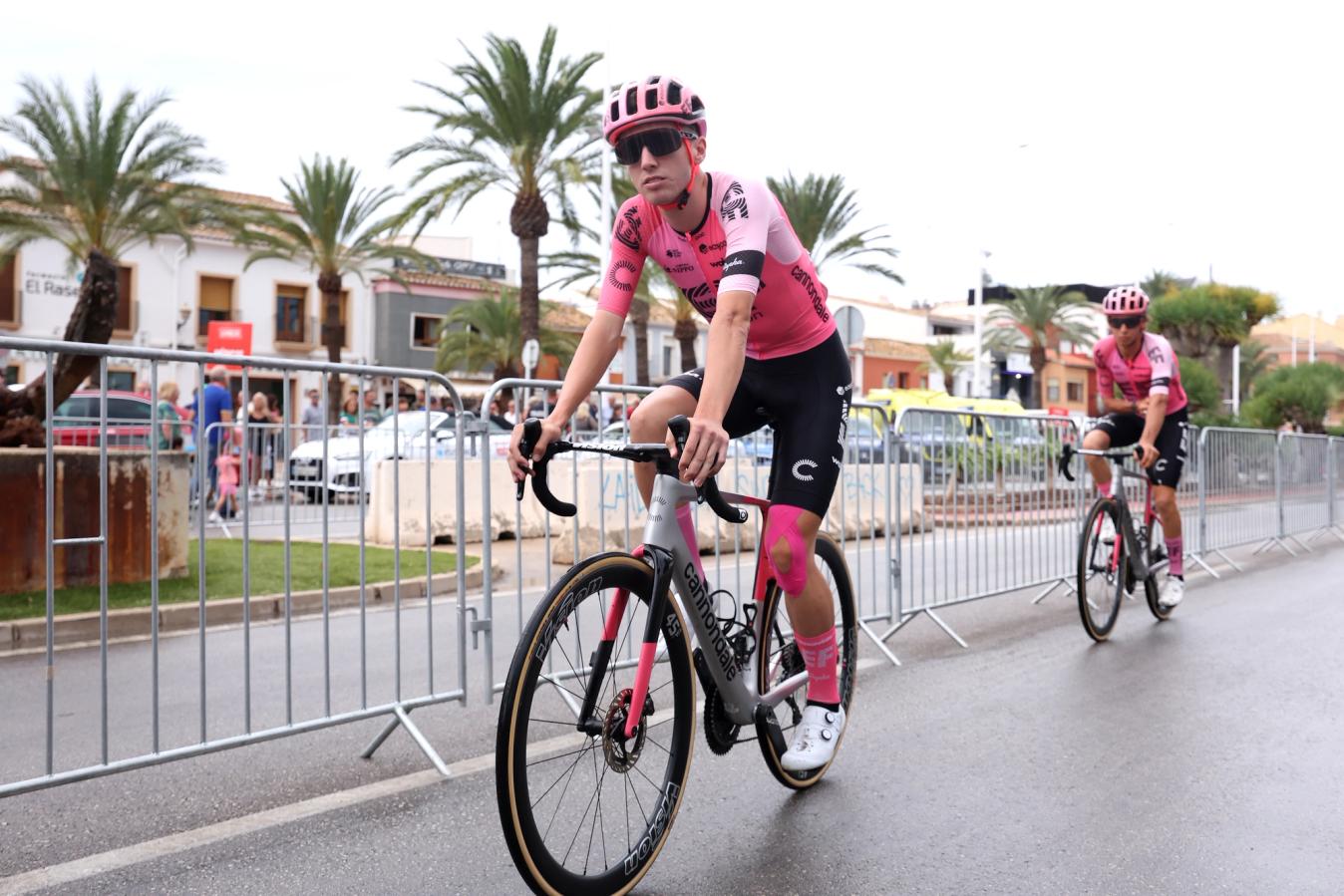
© Velo Collection (TDW) / Getty Images
Sean Quinn is currently racing his first Grand Tour at the Vuelta
Since then, Quinn and Jorgenson have become great friends. Starting with their time together on the national team and now through both being residents of Nice, the two spend lots of time together on and off the bike. With that friendship, Quinn has seen Jorgenson grow into the rider he is in a way that a select few others have seen.
“Matteo and I are pretty much best friends but at the same time we have this competitiveness,” Quinn said of their friendship. “When I see him do something I think, ‘fuck, well if he can do it I can do it too’. He thinks the exact same thing as me and that's been going on since we were 16. It's just an ongoing cycle and at the end of the day if he wasn't there then maybe I wouldn't have believed I could turn pro.
“The thing is the general public will think people come from nowhere but to me it's just a natural progression," Quinn continued. "Really, race results are strange, like sometimes you can be as strong as possible and you don't go anywhere and other years it clicks. I think for me the main thing is figuring out how to string things together. I don't know how to describe it. I have noticed I have many mental blocks in racing. Maybe it's that I am a bit soft sometimes.
“It's really easy to go into a race feeling super prepared and have a crash or a mechanical and it just takes you out of the race mentally. To actually be successful you have to overcome these obstacles like they're nothing.”
Simon Jones, who is now out of the competitive grind of cycling, still keeps in contact with Jorgenson too. Throughout the conversation, Jones had tons of stories from his junior years with Jorgenson, but what was most interesting was his perspective on Jorgenson’s mentality, the way that he has been able to motivate himself as he has progressed through cycling and how he relates to others interpersonally.
“He absolutely had the mentality of 'I am only ever going to get second' and that has just kept pissing him off and making him train harder. It's almost a positive negativity, like I have to train harder, I have to work harder. He is very emotionally connected to his racing which is absolutely one of his strengths.
“He can talk himself into an opinion and it's impossible for him to get out of it. In some of these races he will talk himself into the fact that he is not going to win. But that also helps him be aggressive and work hard, and it makes it sweeter when he beats his own expectations.”
The power of knowing his limits
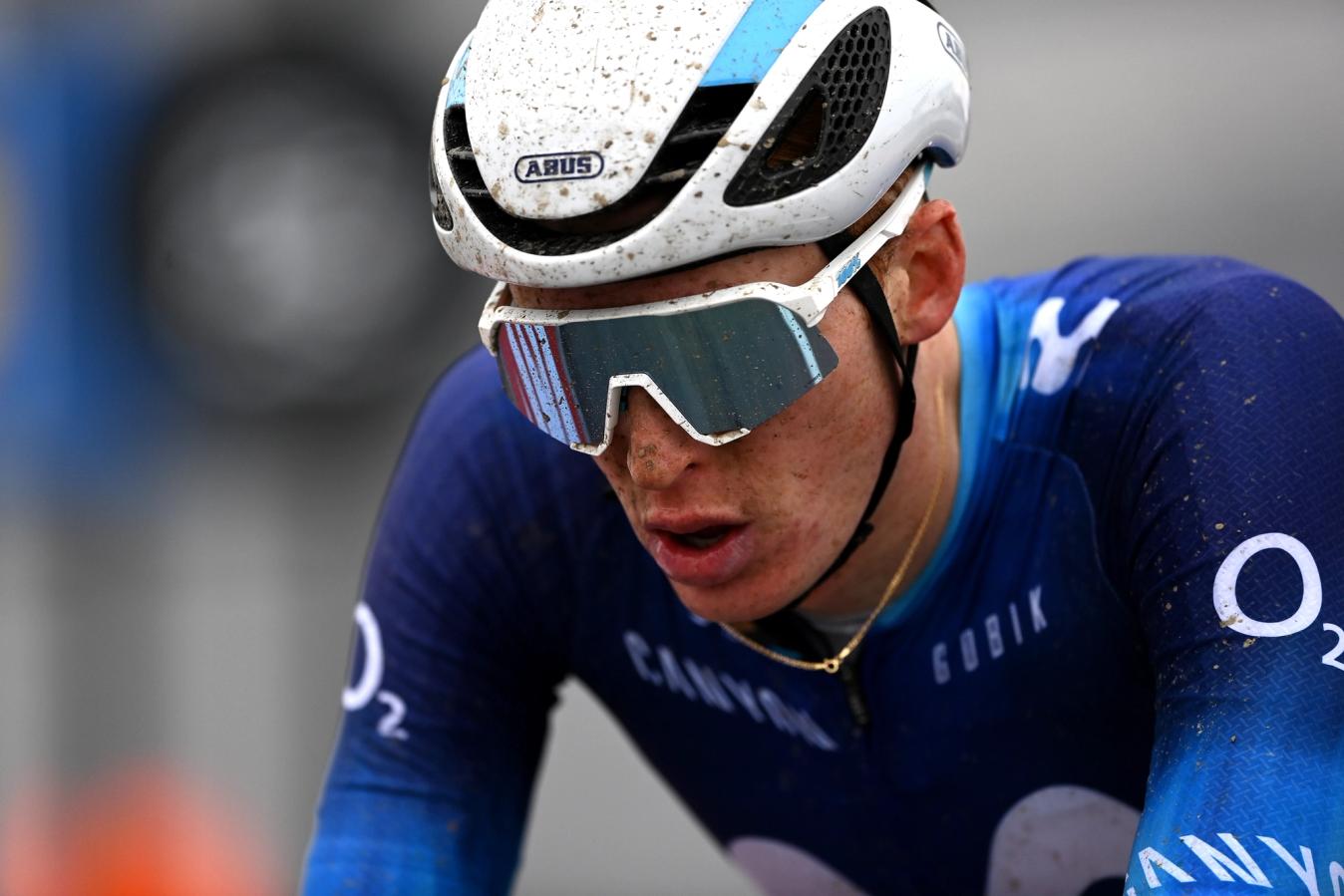
© Velo Collection (TDW) / Getty Images
Jorgenson at the end of the Tour of Flanders
But what does Jorgenson himself think? We asked him about it in a conversation this summer after he pulled out of the Tour de France.
“I think that it was definitely true that as a junior I felt physically behind," he said. "I would look around and see that everyone was kind of older physically so I had a lot of issues around confidence. But, that balanced out and not winning in the end helped me a lot.
“Every year I have added layers to how seriously I have taken things which has been really helpful. I didn't have everything figured out as a junior, as some of the guys I am racing against now have had. I have been able to add professionalism to my life slower in a more gradual way which I think has been helpful. Just so I can understand every step and control each one of those steps.”
“Once you master one thing, you just need to add another and that has been a pretty linear progression.”
That progression is one that Jorgenson has relished in his time on the WorldTour with Movistar over the past four years. Consistency, however, was not an attribute of Jorgenson’s career up until that point. With his mixed results as a junior, he did not have the big professional teams lining up to get his signature. Axeon Hagens Berman, Aevolo and the other smattering of European development teams that American talents end up on were all passing on bringing him on.
In the end, the former US Continental team Jelly Belly agreed to pay him a small salary with the agreement that Jorgenson could race as much as he could with the US national team in Europe. That lifeline, and the connection with European racing with the national team, was all that Matteo needed for his talent to shine through enough to jump to AG2R’s junior set-up the next year, and then onto the WorldTour the next year.
“I can't say I wasn't given anything and I had some opportunities, but looking at not being on Axeon and not having a clear pathway 100 percent helped me. It provided enough of a chip on my shoulder to overcome that it made the grind of getting to the world tour easier. If you are in a big programme and it's all straightforward you might lose the external motivation.”
This progression, and the extra year he needed to go to Europe, was not just about his tendency to have near-miss results but also down to the simple biological clock of puberty.
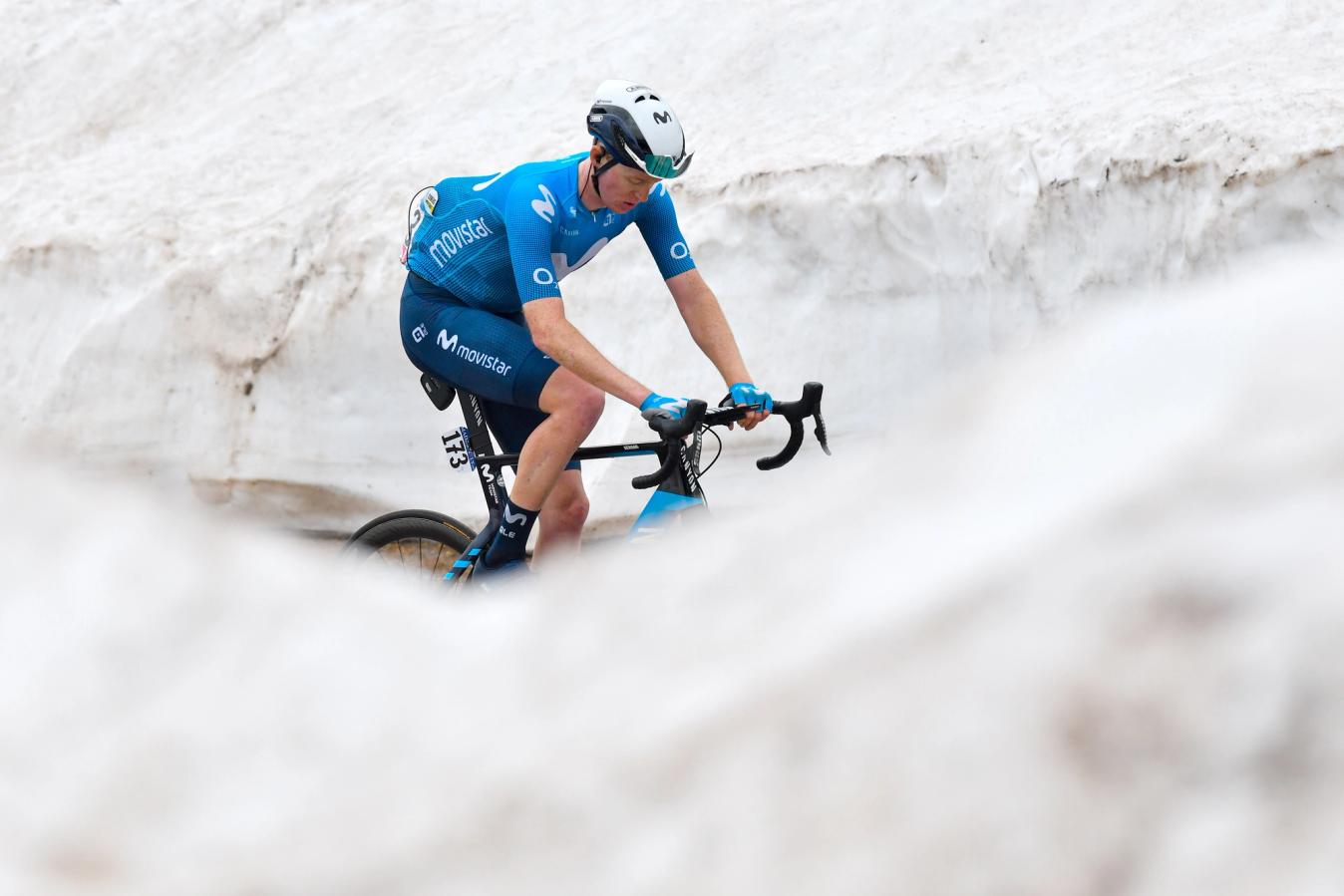
© Velo Collection (TDW) / Getty Images
Before his success, Jorgenson had a couple of Grand Tours of growing pains, notably the 2021 Giro d'Italia
“As a junior, the big thing I would see is the big jump when someone would hit puberty,” Jorgenson said about his journey from the juniors to the WorldTour. “Once I hit puberty, which was for me 19 or 20, I realised this is just how it is: everyone has their own timelines. Now I try not thinking about that stuff because if you think about how a young guy is performing or that you need to be winning by a certain day it starts being not very productive or helpful.”
Even still, Jorgenson has learned the lessons of his junior and U23 career and is keen to keep them in mind as he continues to evaluate where he would like to go from here, especially looking forward to his time at Jumbo-Visma. For Jorgenson, his limitations are almost as motivating as his capacities.
“I kind of see two things I can't do: I have never been able to sprint and I don't think I can compete in the Grand Tour GC,” Matteo said about his limits as a cyclist. “I don't know what the future holds or the margin I have for progression, but at this moment I see myself very far off from doing GC at a three-week race.
“Every time I do a Grand Tour I see how far I am from being able to do GC. It comes down to energy expenditure. I am a really big guy and when it comes down to repetitive days in the mountains I realise how quickly I get empty. I can do it one day, but after a couple, my body cannot handle the kilojoule expenditures.”
What Jorgenson has run up against, and which is a phenomenon that is under discussion in the speculative news cycles around various powerful cyclists becoming GC riders, is a maths problem. Bigger riders, regardless of how lean they might be, will have higher energy expenses at Grand Tour racing. From the easy days to the hardest mountain tests, a bigger rider will always have to expend more energy.
Conversely, the difference between big riders' and small riders' digestion does not scale the same way. Both people, regardless of weight, will be able to process and store similar amounts of potential energy. Generally, a smaller rider will weather the caloric storm of Grand Tour racing better.
“When there are two mountain days in a row, I can't go full on the second because I can't refuel my body after that big day,” Jorgenson told GCN. “The reason why I have been able to perform on one-week stage races is because they only have one big mountain day and I can fuel properly before it and empty myself fully on that one day.”

© Velo Collection (TDW) / Getty Images
Will one week stage racing be where Jorgenson gets his own opportunities at Jumbo-Visma? The Tour de Romandie suggests it might be
While the full ramifications of rider size and how that relates to performance is a lot more complicated than a two paragraph discussion – heat, altitude and other confounding variables also play out differently between different sized riders – what is simple is Jorgenson's conclusion that he really would have to do a lot to get even a little bit more competitive in three-week tests. And for him, that is absolutely okay. He’s got other fish to fry.
“I might have margins to work there, but that's a place I feel way off,” Jorgenson said. “The rest of it I think is super possible. Your body has pretty physical limits and year on year you can push those theoretically, but when you realise how far you have to progress there are certain things you see as beyond those ultimate limits.
“It provides a little clarity - in general you have to experience from the inside what a Grand Tour is like. Even this year for example there are mountain days where I would take it as easy as possible and just make time cut. You are still close to your limits and you realise what you need to do to go 40 minutes faster. That gives some clarity on what to target in the future.”
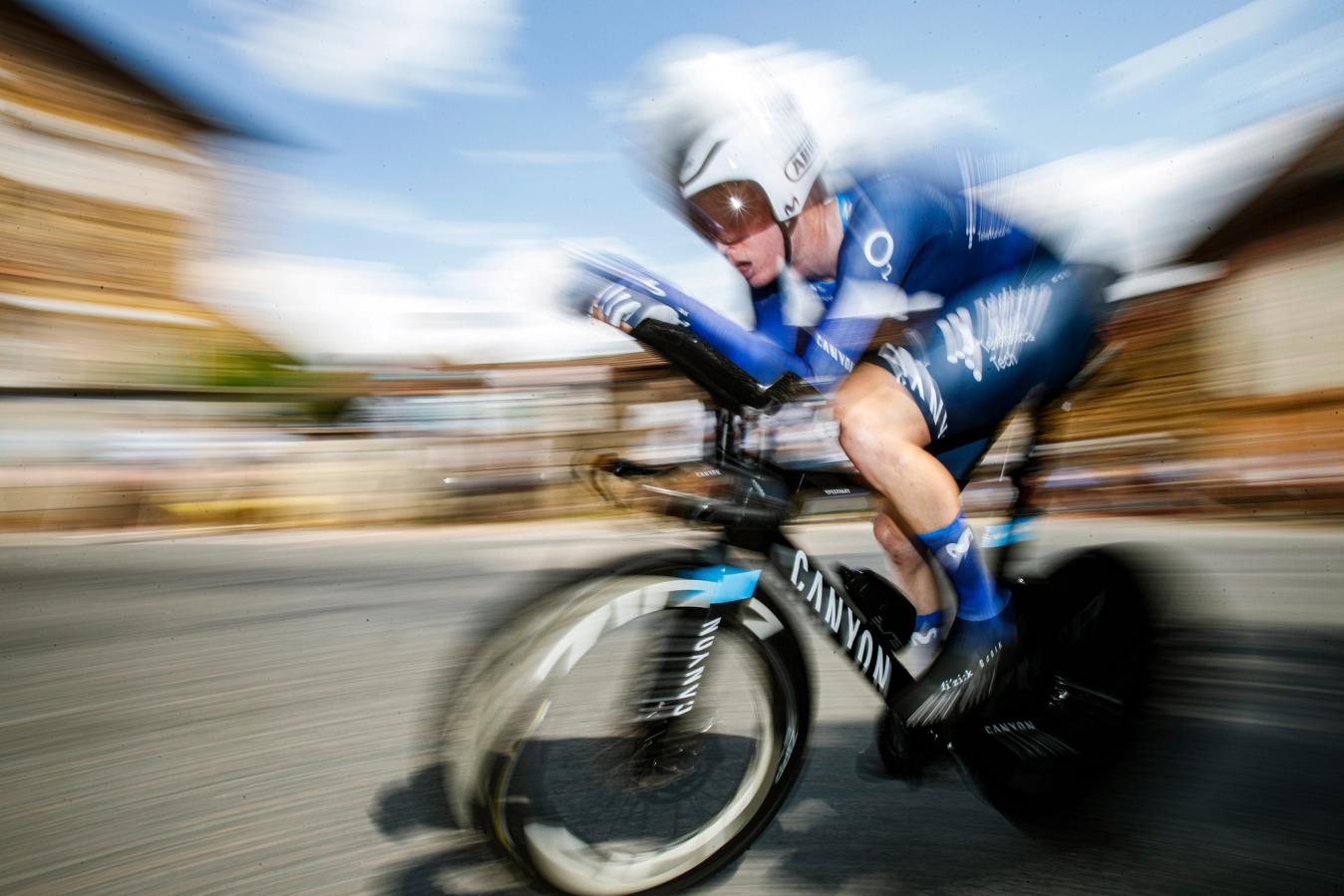
© Sprint Cycling Agency
What will the American do next at cycling's biggest team?
What exactly will Matteo Jorgenson target in the future? He can’t say. There is, at this moment in time, so much Jorgenson cannot say, because there is so much he does not know. With changes in teams often comes changes that no one can anticipate, even as they are on the verge of starting their new endeavour. But what he will surely feel is the confidence in knowing that regardless of the challenges, it's likely to only benefit him in the long run.
That is, as his old friend Simon Jones says, the power of positive negativity.
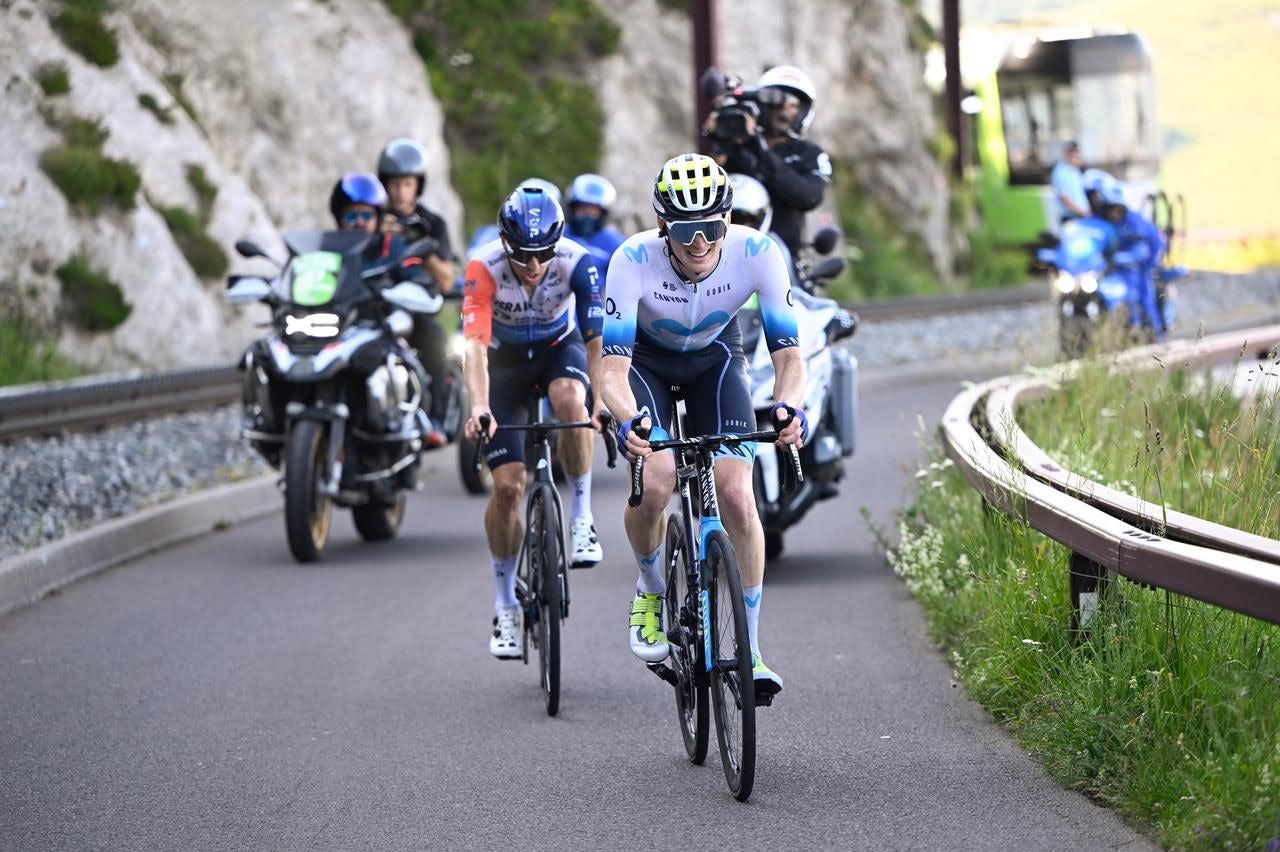









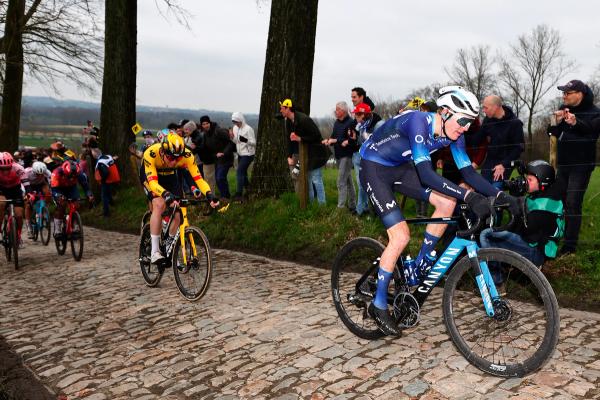
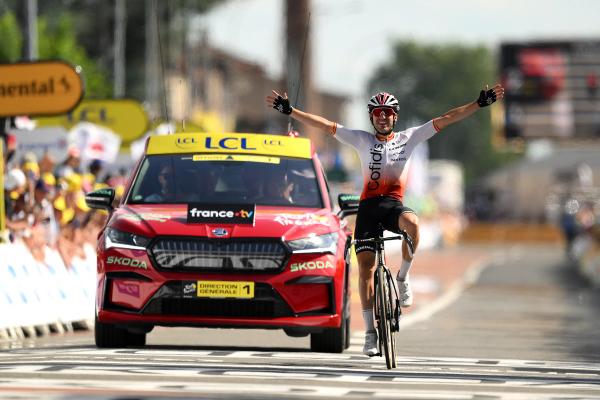

.jpg?w=600&auto=format)